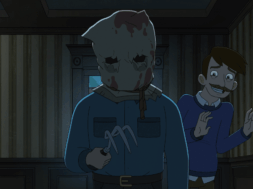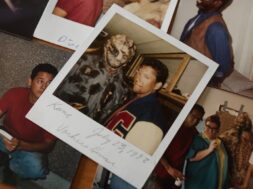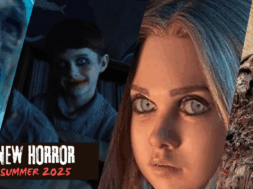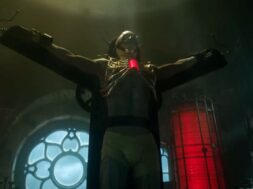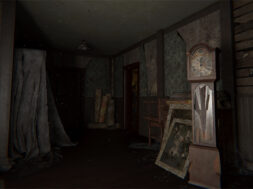Mike Flanagan on How ‘Doctor Sleep’ Changes the Way We Understand Jack Torrance [Interview]
The trickiest thing about Doctor Sleep, the new motion picture sequel to The Shining, is that it’s a sequel to Stanley Kubrick’s classic movie and also Stephen King’s classic novel. The two versions are very similar, but there are distinct differences in plot and, most controversially, the portrayal of struggling alcoholic writer Jack Torrance, who goes mad over the course of an isolated winter in a haunted hotel, and tries to kill his wife, Wendy, and his son, Danny.
King’s sympathetic portrayal of Jack Torrance and Kubrick’s sinister interpretation of the character have been at odds for decades, but in the new sequel Doctor Sleep, director Mike Flanagan tries to find the connective tissue between the two vastly different interpretations of the character. And somehow, amazingly, it works.
But, as we learned in a new interview at Bloody-Disgusting, it wasn’t easy. But before we can learn how he connected the two versions of Jack Torrance, we have to look at what, in Flanagan’s mind, the real difference is between them.
“I would say the key difference is The Shining, as King wrote it, is an expression of is anxiety of what his alcoholism would do to his family if he did not get it under control. I think that is the beating heart of the book that he wrote,” Flanagan explains.
“I think the film Kubrick made is about the unending march of madness that can seize and control us, about toxic masculinity and how it can destroy a family, and how this insanity can all be exacerbated by taking three people who are meant to love each other and putting them in a space without any other contact with the outside world,” adds Flanagan.
“Both of those are chilling visions of that story, and I think in particular you if you look at what happens, they both culminate in Jack Torrance chasing his son with the intent to kill him, right? So they all come back to the same place. But the differences there are ones of optimism,” Flanagan says.
“Because when King tells that story, and Jack Torrance corners Danny, he can’t do it. He has a moment of lucidity. He can’t bring himself to harm his son. His parental love trumps all. He sacrifices himself to save his family, right?” Flanagan reminds us. “In Kubrick’s world, equally scary idea, he never looks back for a second. The only thing that stops him from killing his son is opportunity and temperature. That’s a terrifying idea. I think that they’re both scared of very different things.”

Of course, those are vastly different takes on what makes Jack Torrance work, and according to Flanagan, finding a “common ground” wasn’t necessarily on the table. As a film that uses scenes and iconography from Kubrick’s The Shining, Flanagan’s Doctor Sleep has to adhere to Kubrick’s vision… up to a point.
“Jack Torrance, I don’t know that we could find common ground. I think the challenge for me was, in doing the film the way we did it, Kubrick’s film is canon, right? So we can’t change Jack. We shouldn’t change Jack,” Flanagan says.
“The answer, though, was that some of those moments that King never got – the ones that he was very specific about missing from that adaptation – there was a chance to give them to Dan,” Flanagan says. “There was a chance for his son to have that arc that Jack never had. So that was a neat opportunity that presented itself with this.”
In Doctor Sleep, Jack Torrance’s son Danny is now played by Ewan McGregor, who like his father has succumbed to alcoholism and is struggling with his addiction. But, perhaps ironically, Dan’s own personal tragedy is what makes him finally able to connect with his father on a personal level. In the film Dan reveals as much at an Alcoholics Anonymous meeting, where he imagines that Jack must have once stood where he stood, trying to get his life together.

“And that humanizing his father in his own eyes, in choosing to remember that moment – which in the timeline is very close to the moment when he tried to kill him – that spoke to me when it comes to how children process trauma, especially trauma visited upon them by their parents,” Flanagan says of the AA meeting. “Part of any kind of recovery, and we’re seeing Dan at a very specific station in his recovery, [is] being able to look at his father as a person and not a monster. [It’s] pretty important.”
Doctor Sleep proposes that Stanley Kubrick’s The Shining happened, but also that King’s interpretation of Jack Torrance is still intact. The scenes from the original film, as used in Doctor Sleep, have more to do with Dan’s subjective memories of that horrifying childhood trauma, and only in growing up has he begun to see the nuance in his father that King’s novel made more explicit.
“That’s exactly right,” Flanagan confirms. “We would talk about that a lot too, the difference between what we remembered from the story of The Shining versus what Dan remembers.”
Check out Doctor Sleep in theaters to see more of how the film combines King’s and Kubrick’s visions, and decide for yourself what to believe about The Shining.


